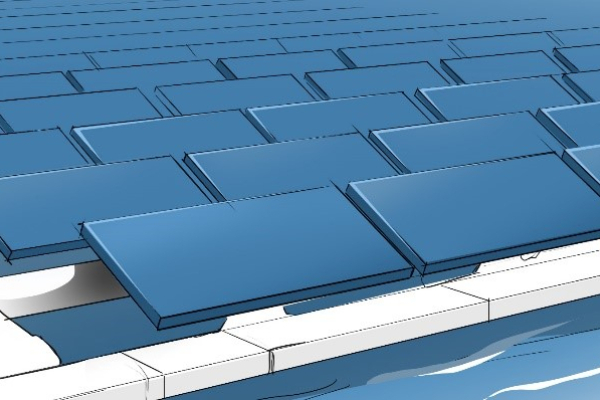 © creativenature.nl – stock.adobe.com
© creativenature.nl – stock.adobe.com
Photovoltaics
Practical test for floating solar energy plants
The recently launched PV2Float research project focuses on testing photovoltaic power plants on water surfaces.
Solar energy plants on the roofs of houses, industrial buildings or even on large open spaces have already become an integral part of the urban and rural landscape. However, floating solar energy plants, meaning photovoltaic power plants installed on water surfaces, have so far been an exception. This is to change in the future.
Partners from research and industry are working together in the PV2Float joint project. Their goal is to subject floating solar energy plants with different system designs to a practical test over several years. The project team wants to test floating photovoltaics in detail and further develop the underlying technology. The test plants are not only intended to analyse the technical conditions. In the project, the scientists are also looking at acceptance issues as well as economic aspects and ecological impacts of the floating photovoltaic power plants.
Potential for electricity generation and climate protection
Floating PV plants allow the development of new usable areas in order to further promote the expansion of renewable energy sources. They offer a unique advantage compared to conventional photovoltaic systems: Floating solar energy plants do not require any new land areas. They use suitable water surfaces and thus draw on a large power generation potential that is so far rarely explored worldwide. Unlike ground-based plants, the photovoltaic modules are installed on floating bodies. This allows them to be deployed at sea or on standing water, such as surface mine lakes.
Floating PV plants also offer other advantages. Installation on a body of water is associated with a cooling effect for the floating photovoltaic power plants, which in turn enables increased power generation. At the same time, the plants ensure that less water evaporates through the covered or shaded area. The challenge is that the installation and servicing of floating PV plants is more complex. In addition, the use of ecologically safe materials must be taken into account for water protection. The innovative technology nevertheless holds great potential. A current guideline from the Fraunhofer Institute for Solar Energy Systems ISE states that the already installed output of floating photovoltaic plants worldwide is around 2 gigawatts. However, if a quarter of the land destroyed by open-pit mining in Germany alone is flooded and covered with floating PV plants, there is already a technical potential here in the mid-double-digit gigawatt range.
The PV2Float research project is funded by the German Federal Ministry for Economic Affairs and Energy (BMWi) and is scheduled to run for three years. (av)











